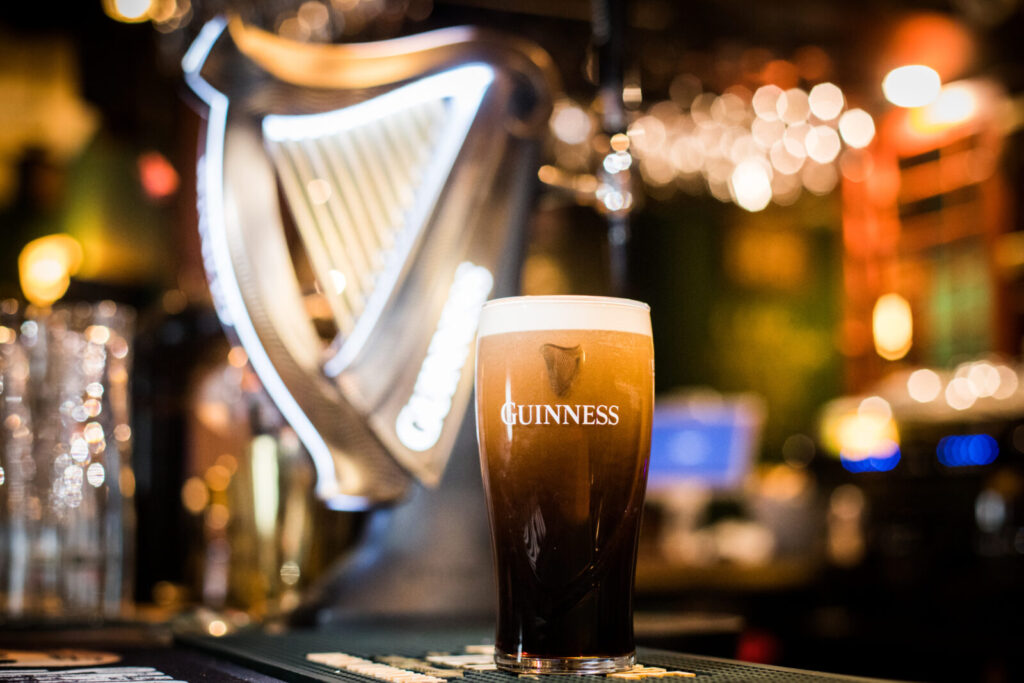Brief • 3 min Read
In The Harris Poll Tracker (Week 87) fielded October 22nd to 24th, 2021 among 2,010 U.S. Adults, we look at how Americans are reassessing their relationships with work, the most popular Halloween candies and the ones kids can do without, the perception of the HR department among employed Americans, vaccination rates across industries, and what viewers dislike about streaming TV ads.
As a public service, our team has curated key insights to help leaders navigate COVID-19. Full survey results, tables, and weekly summaries can be accessed for free at The Harris Poll COVID-19 Portal. We will continue to actively field on a regular cadence to track the shifts in sentiment and behaviors as the news and guidelines evolve.
1. The Great Reimagination of Work: CNBC-Harris Poll
The COVID-19 pandemic has forced Americans to reassess their relationships with work and according to our new survey, conducted in partnership with CNBC, we found that half of working Americans want to make a career change. Here’s what else we found:
- Four in ten (41%) of employed Americans say they are considering leaving their job because their company has not cared about their concerns during the pandemic and (76%) say they want their company to make work permanently flexible in terms of schedule and/or location.
- Of the employed Americans who intend to make career changes because of the COVID-19 pandemic, (41%) are seeking flexible and/or remote work, (39%) desire a raise and/or promotion and (33%) are interested in changing industries.
- Almost one-third (32%) of employees who intend to make a career change because of the pandemic say they’re going to look for another job in the same industry, while (22%) are going to quit their current job and start their own business.
- CNBC’s Ron Insana has a particularly interesting (and sober) take on the protracted woes in our global supply chain drawing more from our data from this study.
Takeaway: Catalyst President and CEO Lorraine Hariton says “we are really in a time to really reinvent work, and to create a more equitable, inclusive and fulfilling workplace for everyone,” she says. “We have an opportunity to use technology and use what we’ve gotten from the pandemic to really change the nature of work and make it a better life for everyone.”
2. Harris Poll Candy Index
What is the most valuable Halloween candy in the eyes of children? We polled 938 U.S. Children between the ages of 8-17 on which candies they are willing to trade for another to determine the value they place on the most common Halloween candies. Check out some key findings from the full study below:
- Reese’s came out on top: kids are only willing to trade Reese’s (11%) of the time, on average. Meanwhile, Candy Corn, Dots, and Almond Joys hold a much lower consumption value as the Halloween candies kids are most willing to trade.
- We also asked kids about their favorite candies and saw this directly correlated with a willingness to trade high quantities for them. Sour Patch Kids were the second favorite candy with (14%) saying it was their favorite, and kids were willing to trade a considerable 8.5 packs of Candy Corn for just one pack of Sour Patch Kids.

- Longevity Matters: When we dive into the responses based on what kid’s favorite candy type is, we find that children also place a high value on candies that last longer than others if their favorite candy was a hard candy (49%) or a sucker/lollipop (58%).
Takeaway: As Halloween approaches, these value rankings can give insight for both candy brands vying to come out on top this spooky session and homes expecting trick-or-treaters alike. The top candies included Reese’s, Sour Patch Kids, Hershey’s Bars, and M&M’s as they top the list for both childrens’ favorite and most valuable Halloween candies. Check out the full rankings and dive into specific candy insights here.
3. Workers Will Trade Longer Hours for Four-Day Week: HR Brew-Harris Poll
Trying to assess the perception and impact of HR policies can be a murky business, so we partnered with HR Brew to conduct an exclusive survey to find out what’s on the American workers’ minds when it comes to all things HR. Here’s what we found:
- A large majority (83%) of American workers would be in favor of a four-day work week and (87%) say they are willing to work longer hours daily to get that extra day off.
- When it comes to DE&I initiatives, only (13%) of workers say their employers have taken a step to expand diversity initiatives in some way, with nearly half (49%) saying no effort and two-fifths (38%) saying they’re unsure.
- So, how does the HR department fare in all of this? Boomers are more likely to be confident in their employer’s HR department when it comes to handling challenges, especially compared to Gen Zers. A majority (83%) of Boomers are confident in HR when it comes to equal pay, but just (55%) of Gen Z agrees.

Takeaway: In COVID times, worker attitudes change at the pace of viral TikTok challenges: Each day, there’s something new. But some numbers don’t seem so fleeting. According to these responses, there’s daylight between what HR is doing to tackle diversity and what employees understand.
4. These Industries Have Low Vaccination Rates – And That Could Be a Big Problem for Vaccine Mandates:
About half of U.S. employers are already taking steps to verify the vaccine status of workers, but vaccination levels remain stubbornly low in some sectors. We recently partnered with Fortune to determine which industries may be having an easier time verifying the status of their workers. Here is what we found:
- Industries with the lowest vaccination rates are fairly wide-ranging and include food services (41%), business services (37%), manufacturing/construction (36%), as well as those working in public safety (33%).
- In our polling, nearly two-thirds (63%) support the vaccine mandate for large employers and three-fifths or more support vaccine mandates for healthcare workers (69%), daycares and schools (67%), colleges (65%), grocery stores (64%), banks (63%), and retail stores (63%).
- Bloomberg profiles Sweetgreen’s struggles to get workers to prove they are vaccinated – and not quit. And NPR looks at how police unions across the country are objecting to a vaccine mandate.

Takeaway: Employers are navigating enforcing vaccine mandates to keep customers and workers safe, while trying to avoid a mass exodus of employees. For some industries, that is easier said than done as they face new headwinds in getting workers to comply. However, early signs show that vaccine mandates are working in convincing even hesitant workers to get innoculated.
5. What Viewers Dislike About Streaming TV Ads: Ad-Age-Harris Poll
Most U.S. streaming users have come to expect commercials on the platforms they watch, but the vast majority are being served the same ads too frequently and not when they want to see them, according to the latest Ad Age-Harris Poll research. Here’s more:
- Ad-supported video-on-demand services have accelerated at a healthy clip amid the increasingly crowded “streaming wars” and four-in-five Americans now expect some form of ads to air on the streaming platforms they use.
- With that, (44%) say they don’t expect more than one or two commercials per 30-minute show, a stark contrast to the just (7%) of users who expect four or more ads in the same timeframe.
- Ad loads vary significantly, but one near-universal issue that respondents flagged is ad frequency with (88%) of streaming users in the U.S. say they often see the same ad or ads multiple times per viewing session.
- A similar number, (82%), say they would prefer to view ads before a program begins rather than be interrupted with a commercial midway through.
Takeaway: Most AVOD platforms currently available in the U.S. don’t allow people to choose when during their viewing experience they’re served ads, but our research suggests that giving them some degree of control might boost ad engagement as (56%) of respondents say they would pay more attention to any given ad if they were able to decide when they watched it.
Subscribe for more Insights
Subscribe to our newsletter for the latest trends in business, politics, culture, and more.
Download the Data
This survey was conducted online within the U.S. by The Harris Poll from October 22 to 24, among a nationally representative sample of 2,010 U.S. adults.
Download
Subscribe for more Insights
Subscribe to our newsletter for the latest trends in business, politics, culture, and more.
Download the Data
This survey was conducted online within the U.S. by The Harris Poll from October 22 to 24, among a nationally representative sample of 2,010 U.S. adults.
DownloadRelated Content








